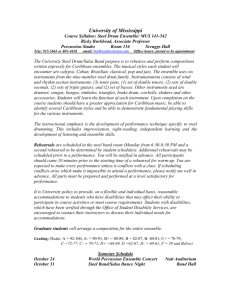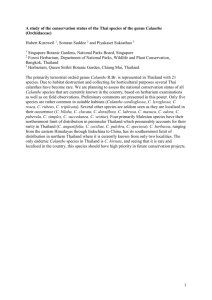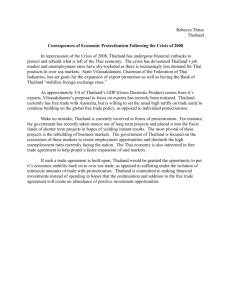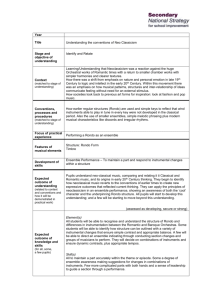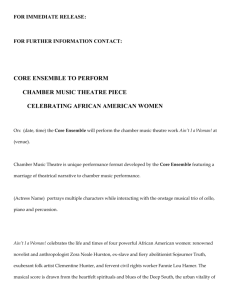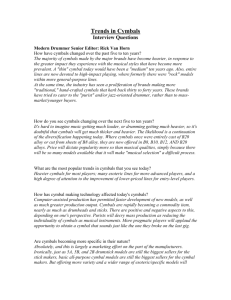Beer - Ethnomusic, Inc.
advertisement
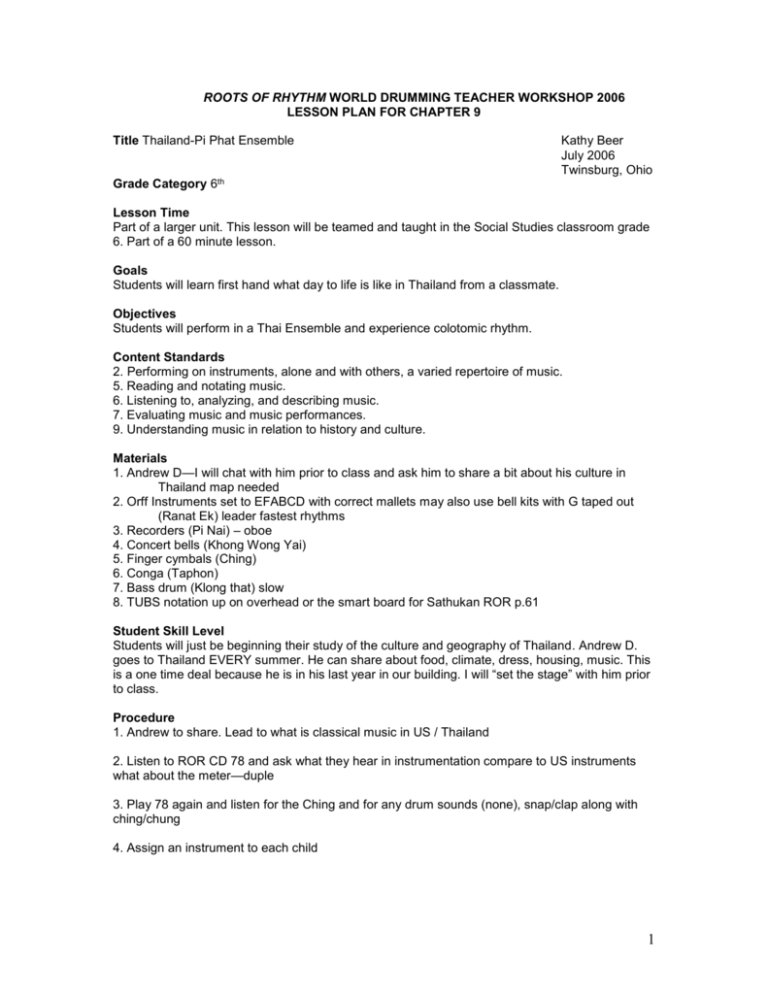
ROOTS OF RHYTHM WORLD DRUMMING TEACHER WORKSHOP 2006 LESSON PLAN FOR CHAPTER 9 Title Thailand-Pi Phat Ensemble Kathy Beer July 2006 Twinsburg, Ohio Grade Category 6th Lesson Time Part of a larger unit. This lesson will be teamed and taught in the Social Studies classroom grade 6. Part of a 60 minute lesson. Goals Students will learn first hand what day to life is like in Thailand from a classmate. Objectives Students will perform in a Thai Ensemble and experience colotomic rhythm. Content Standards 2. Performing on instruments, alone and with others, a varied repertoire of music. 5. Reading and notating music. 6. Listening to, analyzing, and describing music. 7. Evaluating music and music performances. 9. Understanding music in relation to history and culture. Materials 1. Andrew D—I will chat with him prior to class and ask him to share a bit about his culture in Thailand map needed 2. Orff Instruments set to EFABCD with correct mallets may also use bell kits with G taped out (Ranat Ek) leader fastest rhythms 3. Recorders (Pi Nai) – oboe 4. Concert bells (Khong Wong Yai) 5. Finger cymbals (Ching) 6. Conga (Taphon) 7. Bass drum (Klong that) slow 8. TUBS notation up on overhead or the smart board for Sathukan ROR p.61 Student Skill Level Students will just be beginning their study of the culture and geography of Thailand. Andrew D. goes to Thailand EVERY summer. He can share about food, climate, dress, housing, music. This is a one time deal because he is in his last year in our building. I will “set the stage” with him prior to class. Procedure 1. Andrew to share. Lead to what is classical music in US / Thailand 2. Listen to ROR CD 78 and ask what they hear in instrumentation compare to US instruments what about the meter—duple 3. Play 78 again and listen for the Ching and for any drum sounds (none), snap/clap along with ching/chung 4. Assign an instrument to each child 1 5. Introduce all 6 instruments one at a time with their function within the ensemble and play along with CD 79-81 on one of the 3 melody instruments p. 61. When doing this, point out the colotomic rhythm set up of 8, 4, 2, and 1. 6. Same with drums/cymbals CD 82-84 p.61 7. Put together and play slow and fast which is easier? Student Product The product is their participation in the Thai ensemble. Assessment Evaluation is participatory observe as children play in the ensemble. Orally get their reaction to how it was to play in this type of ensemble vs. the drum circle when they studies Africa. Reflection This is a one time deal this year with Andrew. To do the lesson without him I would do the research myself about the every day life an 11 year old child and use the smart board to show pictures of Thailand. Resources The ROR make an instrument Ranat Ek is a good idea too. A pretty good site is www.seasite.niu.edu/Thai/music/classical/ThaiEnsemble/default.htm - 12k 2


